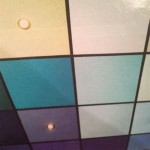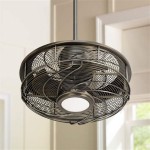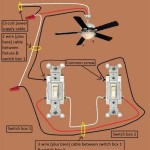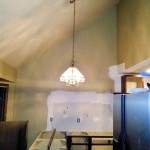How to Build a Faux Coffered Ceiling in Revit
A faux coffered ceiling is a great way to add depth and interest to a room without the cost and hassle of installing a real coffered ceiling. In this tutorial, we will show you how to create a faux coffered ceiling in Revit using simple techniques and materials.
Step 1: Create the Ceiling Grid
The first step is to create the grid that will form the basis of your faux coffered ceiling. To do this, draw a series of parallel lines on the ceiling plane at regular intervals. The spacing of the lines will determine the size of the coffers.
Step 2: Create the Moldings
Once you have created the grid, you need to create the moldings that will form the coffers. To do this, use the Molding tool to create a profile for the molding. The profile should be a simple shape, such as a rectangle or a cove.
Step 3: Apply the Moldings to the Ceiling
Once you have created the moldings, you need to apply them to the ceiling. To do this, select the molding profile and then click on the Ceiling tool. In the Ceiling dialog box, select the "Apply Molding" option and then select the grid lines that you want to apply the molding to.
Step 4: Create the Infill Panels
Once you have applied the moldings, you need to create the infill panels that will fill in the spaces between the moldings. To do this, use the Filled Region tool to create a region for each infill panel. The region should be the same size as the space between the moldings.
Step 5: Apply a Material to the Infill Panels
Once you have created the infill panels, you need to apply a material to them. To do this, select the infill panels and then click on the Material tool. In the Material dialog box, select the material that you want to apply to the infill panels.
Step 6: Add a Light Source
Once you have applied a material to the infill panels, you need to add a light source to the scene. To do this, click on the Insert tab and then click on the Light tool. In the Light dialog box, select the type of light that you want to use, and then position the light in the scene.
Step 7: Render the Scene
Once you have added a light source, you need to render the scene to see the final result. To do this, click on the View tab and then click on the Render tool. In the Render dialog box, select the render settings that you want to use, and then click on the Render button.
Conclusion
Creating a faux coffered ceiling in Revit is a relatively simple process that can add a touch of elegance and sophistication to any room. By following the steps outlined in this tutorial, you can create a faux coffered ceiling that looks just like the real thing.

Revit How To Make Coffered Ceiling

Revit Tutorial Coffered Ceiling Model In Place

Revit How To Make Coffered Ceiling

Classical Coffered Ceiling In Revit Tutorial

6 Types Of Ceilings Modeled In Revit Tutorial Ceiling

Bim Revit Tutorial Parametric Waffle Ceiling

Revit Rocks Cadclip Waffled Or Coffered Ceiling Tutorial

Recessed Ceilings In Revit

Revit How To Create Ceiling Crown

Revit Tutorials Ceilings
Related Posts








